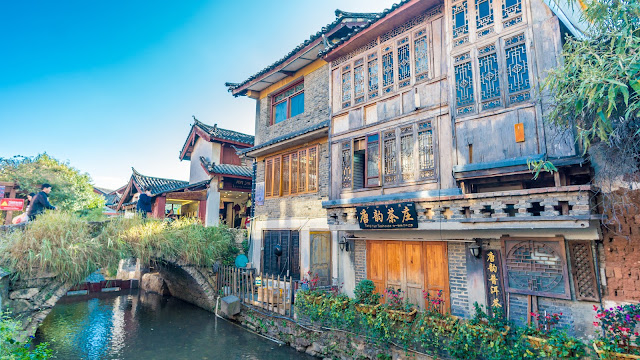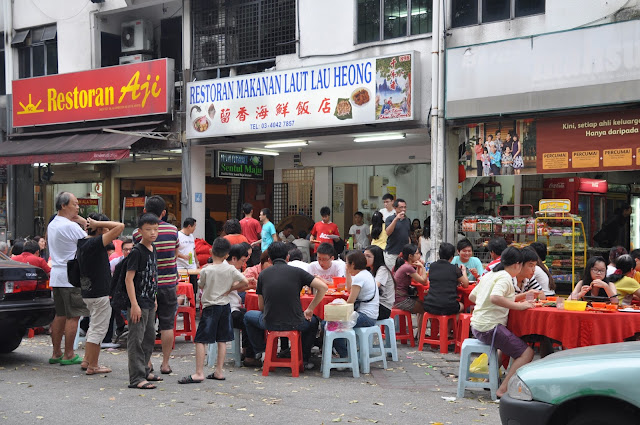Lijiang Old Town, Lijiang, Yunnan
 |
| Lijiang Old Town is located at the heart of Lijiang. To get to here there are several ways depending on where you are from: |
- From Kunming:
- Flight:
- Take plane from Changshui Airport. It takes around 40mins. Upon arrival, visitors can take airport shuttle bus to reach Lantian Hotel in the downtown area. Bus fare is around CNY 20. It takes around 30 minutes. Then they can walk around 1 kilometer (1,100 yards) to reach there. Or they can take bus no. 27 and get off at Zhongyi Guangchang. If taking a taxi from Lijiang Airport, taxi fare should be around CNY 80 to 100.
- Bus:
- Departure Point: West Bus Station
- Departure Time: 9.30am - 9.00pm
- Ticket Price: CNY184 / CNY202 / CNY217
- Duration: 8 hours
- Train:
- Take fast trains from Kunming Railway Station. It takes around 7 to 10 hours. Then change bus no. 16 to get off at Qixing Street Station, or bus no. 18 to White Dragon Square Station. It costs around CNY 40 by taxi.
- From Dali:
- Bus:
- Take bus from Tourist Bus Station near the South Gate of Dali Ancient Town, Dali North Bus Station or Dali Express Bus Station to Lijiang Bus Station in the Lijiang Old Town.
- You can buy the bus ticket from the tour agencies at the Dali Ancient City. They do provide free pickup from selected hotels too. The price is CNY70/pax
- Train:
- Take fast trains from Dali Railway Station. Train ticket prices are CNY 34 for a hard seat, CNY 69.5 for a hard sleeper and CNY 104. 5 for a soft sleeper. It takes around 1.5 to 2.5 hours. After arriving, use local public bus to reach the old town.
 |
| This is the map of Lijiang Old Town. You do not have to understand what is written on the map. Just look at the road. It is really complicated. It is unlike Dali Ancient City which is very systematic. You may get lost here at Lijiang Old Town. |
 |
| One of the beauty of the Lijiang Old Town is the river or stream which is flowing inside the town. The water is coming from Jade Dragon Mountain so the water is pure and chilling cold. |
 |
| Most of the shops at Old Town Lijiang is similar like what you will see at Dali Ancient City even though they are managed by two different tribes. One thing I see it unique is this pottery shop which allows their customers to make their own pot. It is a great experience to be honest. Everyone should give it a try. |
 |
| Same like Dali Ancient City, live band is every where too at Lijiang Old Town. The only difference is the decoration of their bistro which they are trying to attract the tourists is amazing. You can check out the photos below. You should pick one of them to enjoy the local music. It is different type of experience by enjoying the local culture here through music. |
 |
| Overall, you may need one whole day to explore the entire maze-alike Lijiang Old Town. You may wasting time getting lost and walking at the same road again but it is still a priceless experience. I fall in love with Lijiang Old Town when the first time I saw it. The only thing I do not like is Lijiang Old Town is much more crowded compare to Dali Ancient City and the price here is slightly more expensive too. For visitors in a tour group organized by travel agencies, they need to pay CNY 80 as the maintenance fare; for individual visitors, some hotels inside may charge the fare. They receive a receipt once they pay, which is checked when going to some attractions in Lijiang like Jade Spring Park and Baisha Mural. The fare can also be paid when it's checked on site. |
Operating Hours: Some as early as 7.00am but mostly all opened for business at 11.00am until 10.00pm. For Bistro until late about 2.00am - 3.00am
Recommended?: 4/5



























Comments
Post a Comment